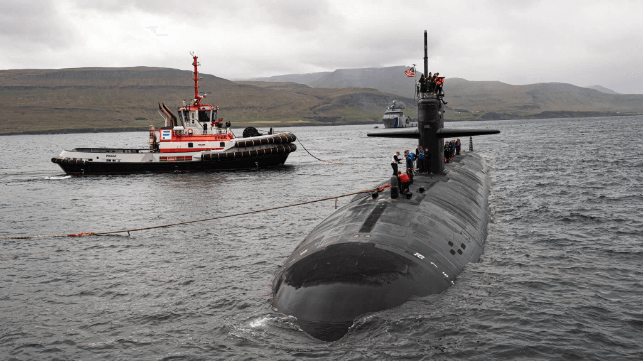In a Strategic First, a U.S. Nuclear Sub Calls at Reykjavik

For the first time ever, Iceland has welcomed a nuclear submarine to the port of Reykjavik, providing a U.S. Navy sub crew with a stopover in the middle of the strategic Greenland-Iceland-UK gap (GIUK gap). This stretch of frigid water is the gateway between Russia's Arctic submarine bases and the North Atlantic, and it is critical for NATO forces to monitor.
Iceland has hosted U.S. military units since the early days of the Cold War, but for decades it did not allow nuclear-powered submarines to enter its territory. That policy changed in 2023, after Russia invaded Ukraine. NATO-Russia tensions were rising, Russian submarine activity in the North Atlantic was ticking upwards, and European and Scandinavian states had reason to be concerned about Russian sabotage of subsea infrastructure.
In this changing security landscape, Iceland agreed to allow American nuclear subs to surface in its territorial seas for brief periods of time in order to resupply and to conduct crew changes. Over the past two years, that privilege has been used several times by the U.S. Navy's nuclear attack sub fleet. The agreement also provides for occasional port calls for subs if required, but this week was the first time that a U.S. Navy nuclear sub pulled alongside a pier in Reykjavik.
"Deep coordination with our incredible NATO ally Iceland to achieve this historic visit demonstrates our commitment to freedom of navigation and the security of our allies in the region," said the U.S. Embassy to Reykjavik's charge d'affaires, Erin Sawyer, in a statement.
Adm. Stuart Munsch, commander of U.S. Naval Forces Europe-Africa, told Business Insider that the port call was more than a technical stopover - it was "important for the strategic signal it sends to adversaries about our presence in the area." Without access to Reykjavik, an attack sub patrolling the GIUK gap would have to transit hundreds of miles to Norway or Scotland in order to reach another suitable port for resupply; with access to Reykjavik, the sub fleet can spend more days on station.
The U.S. Navy's nuclear ballistic missile submarines are still prohibited from visiting: Iceland has a strict ban on nuclear weapons, so the SSBNs are not permitted to enter.
